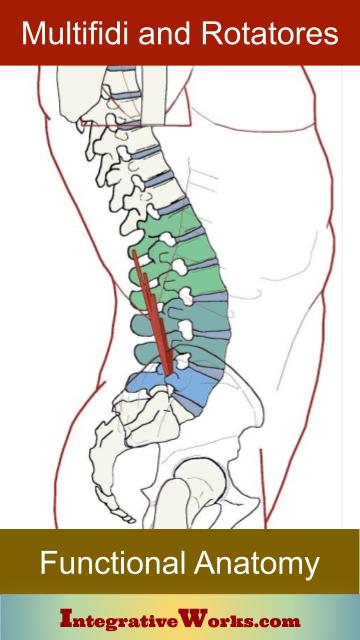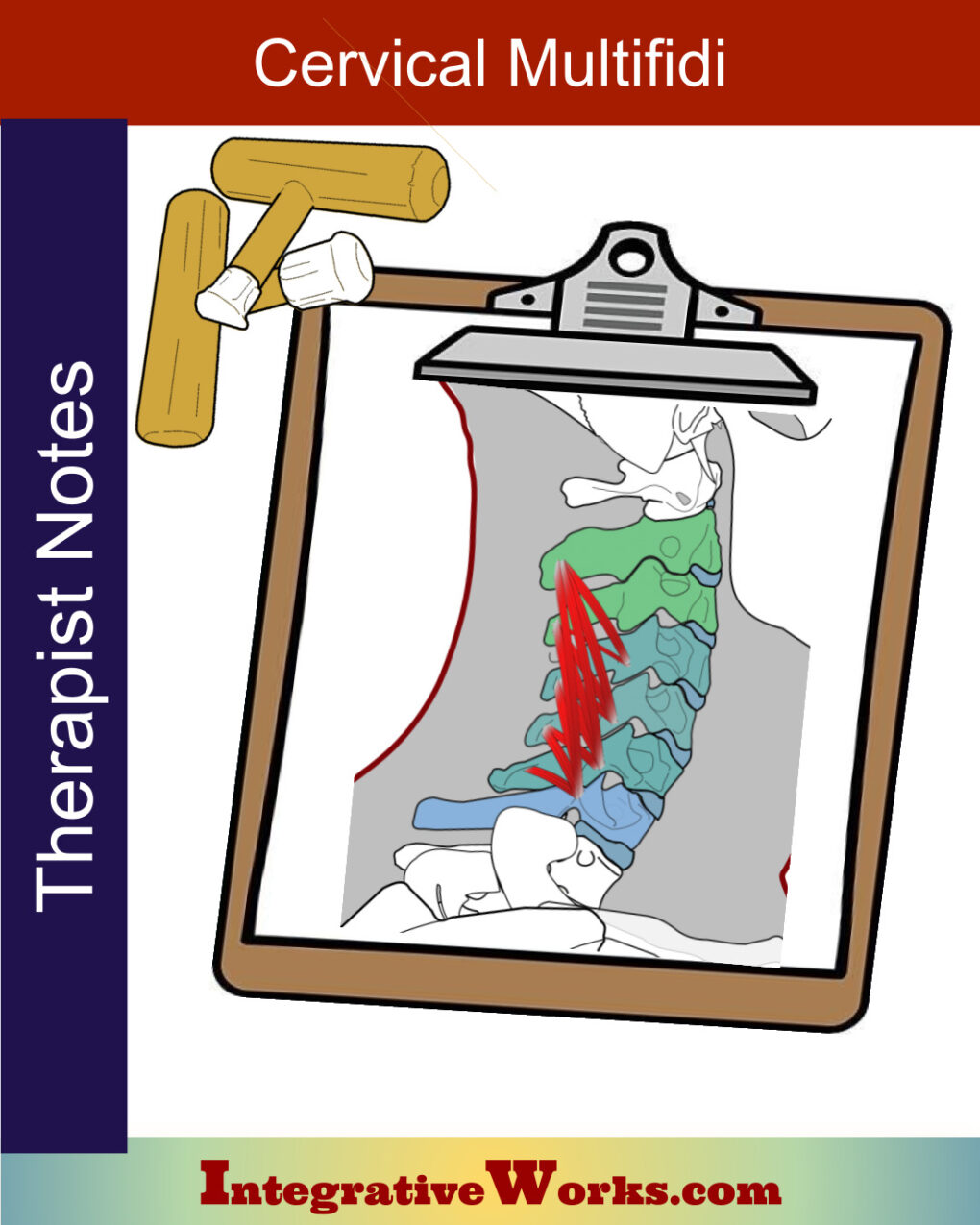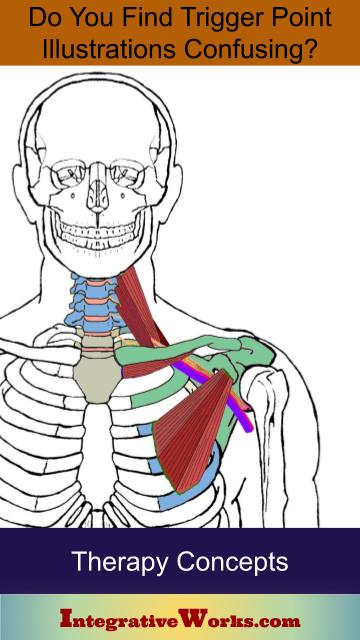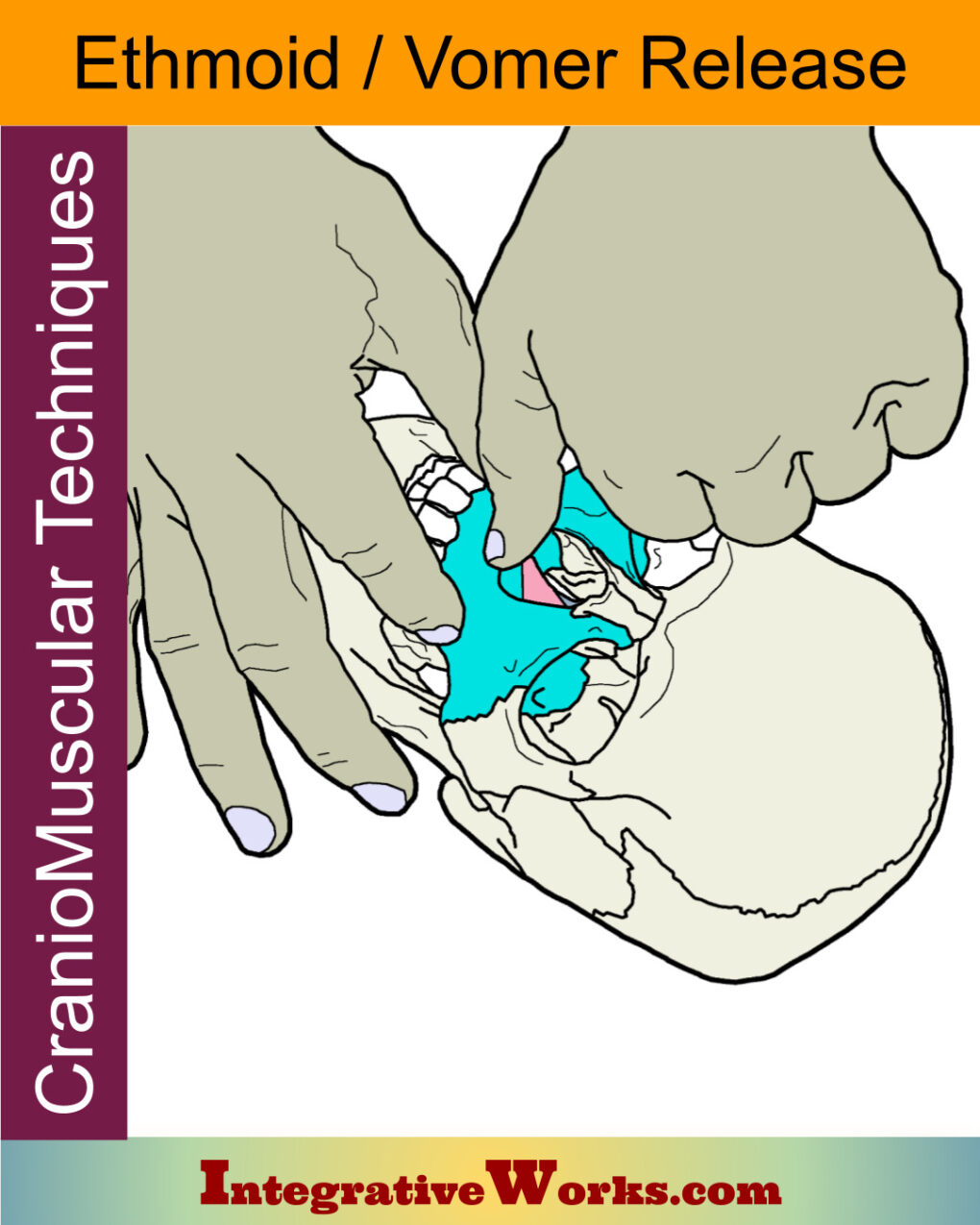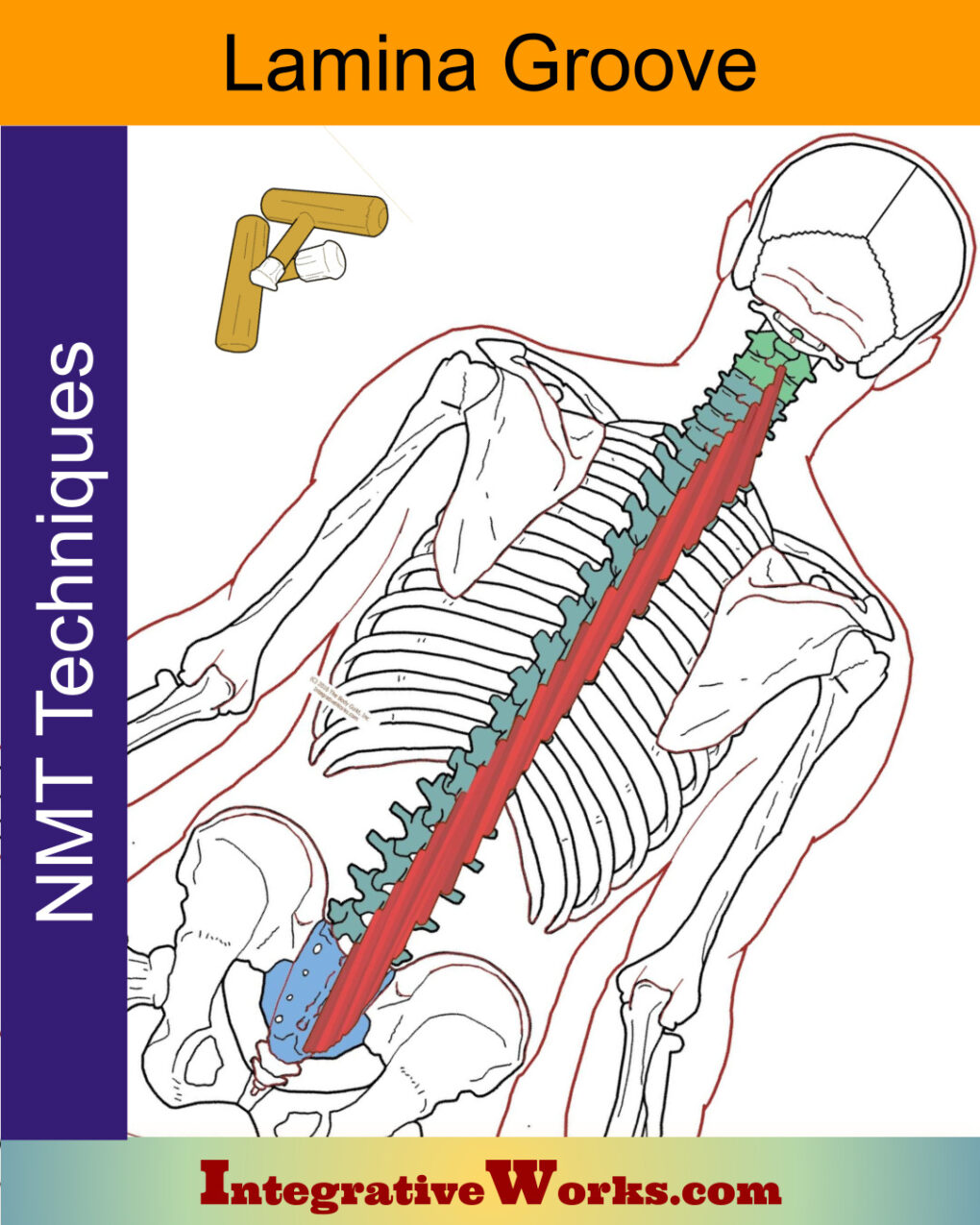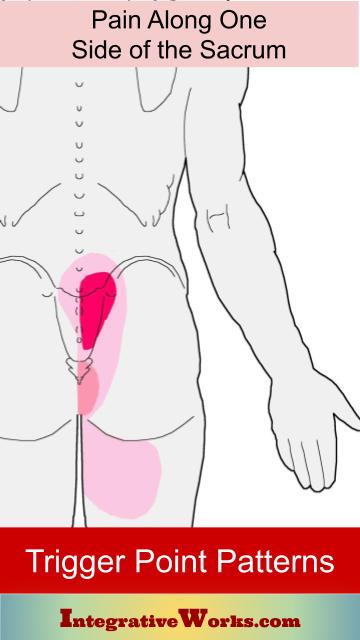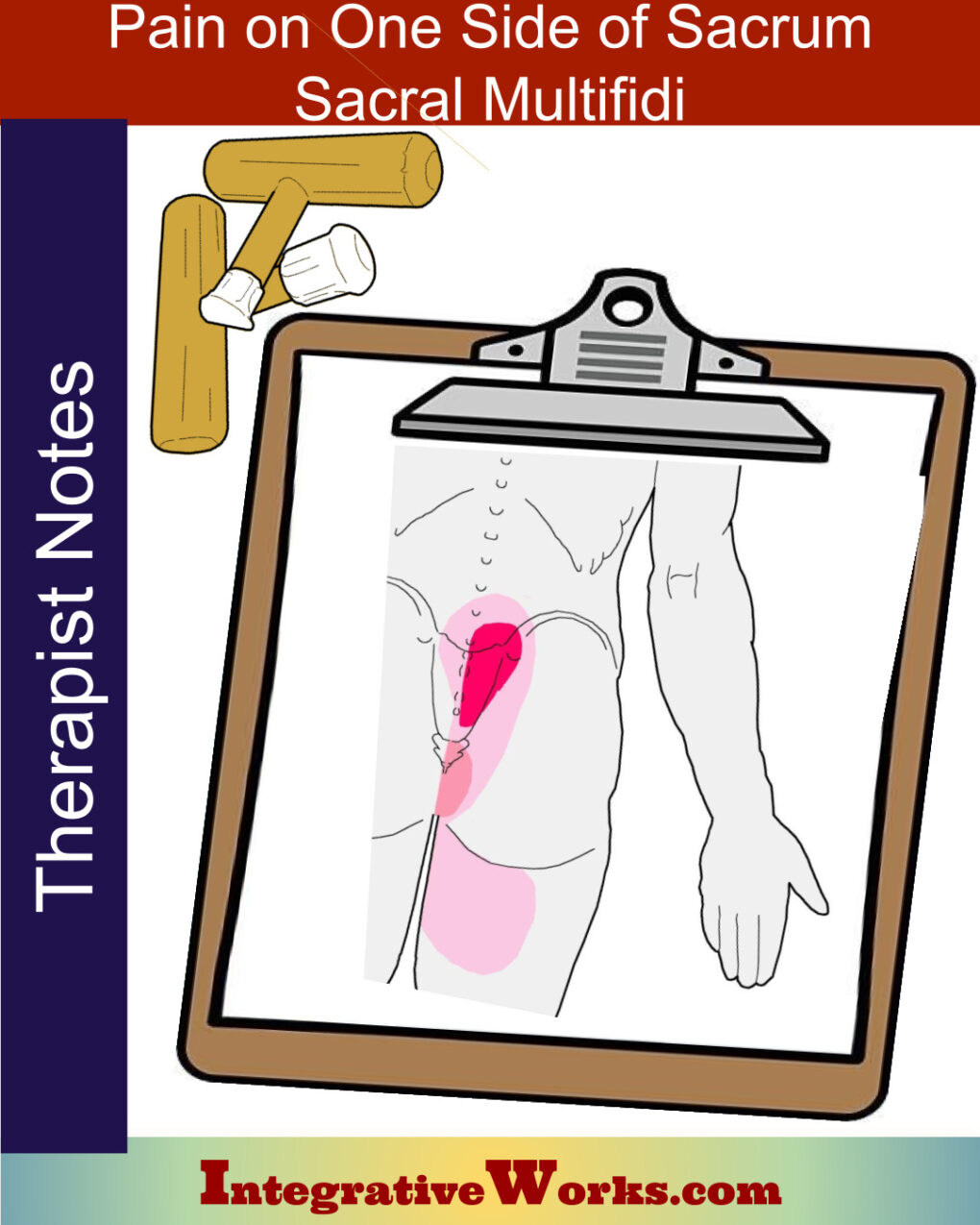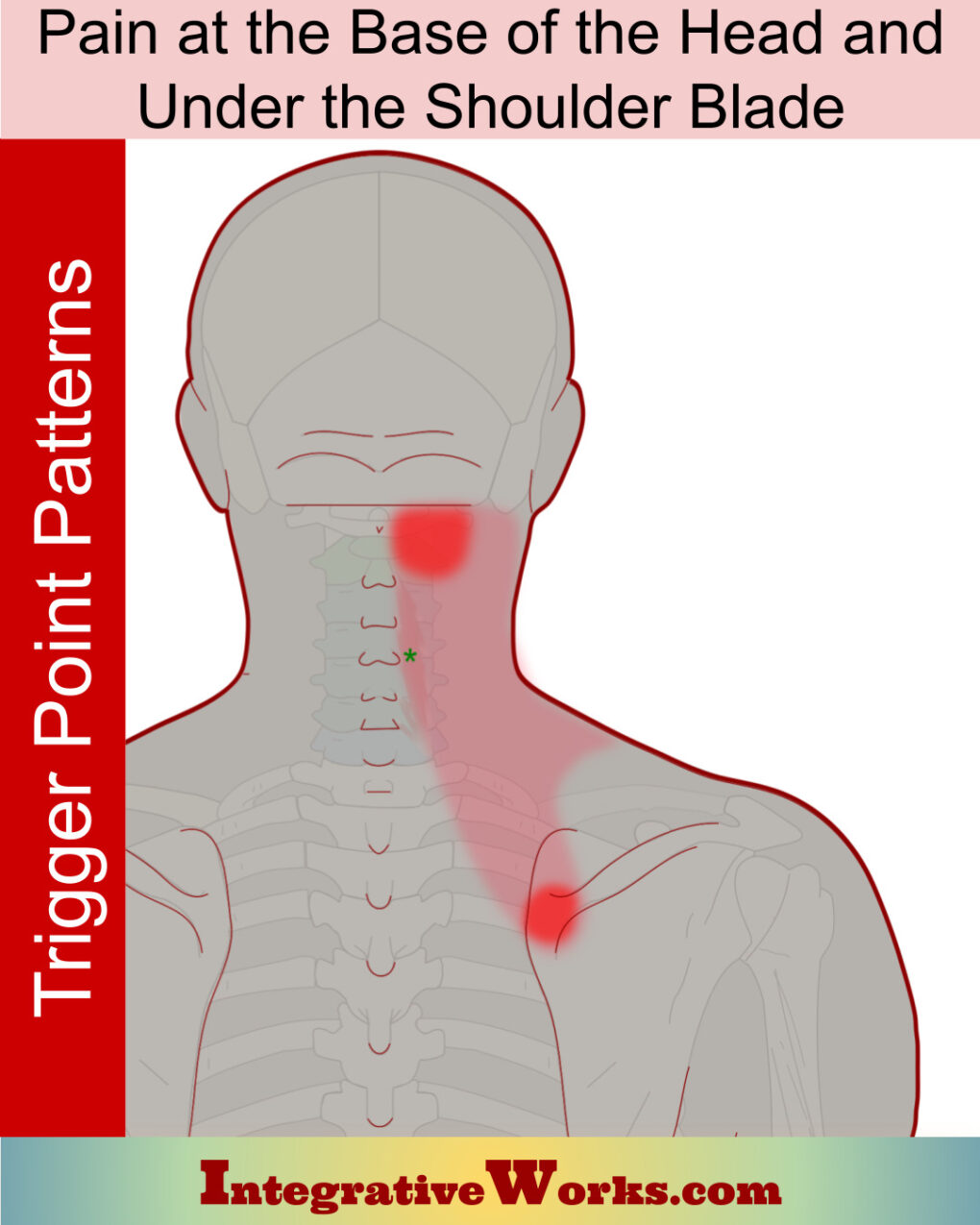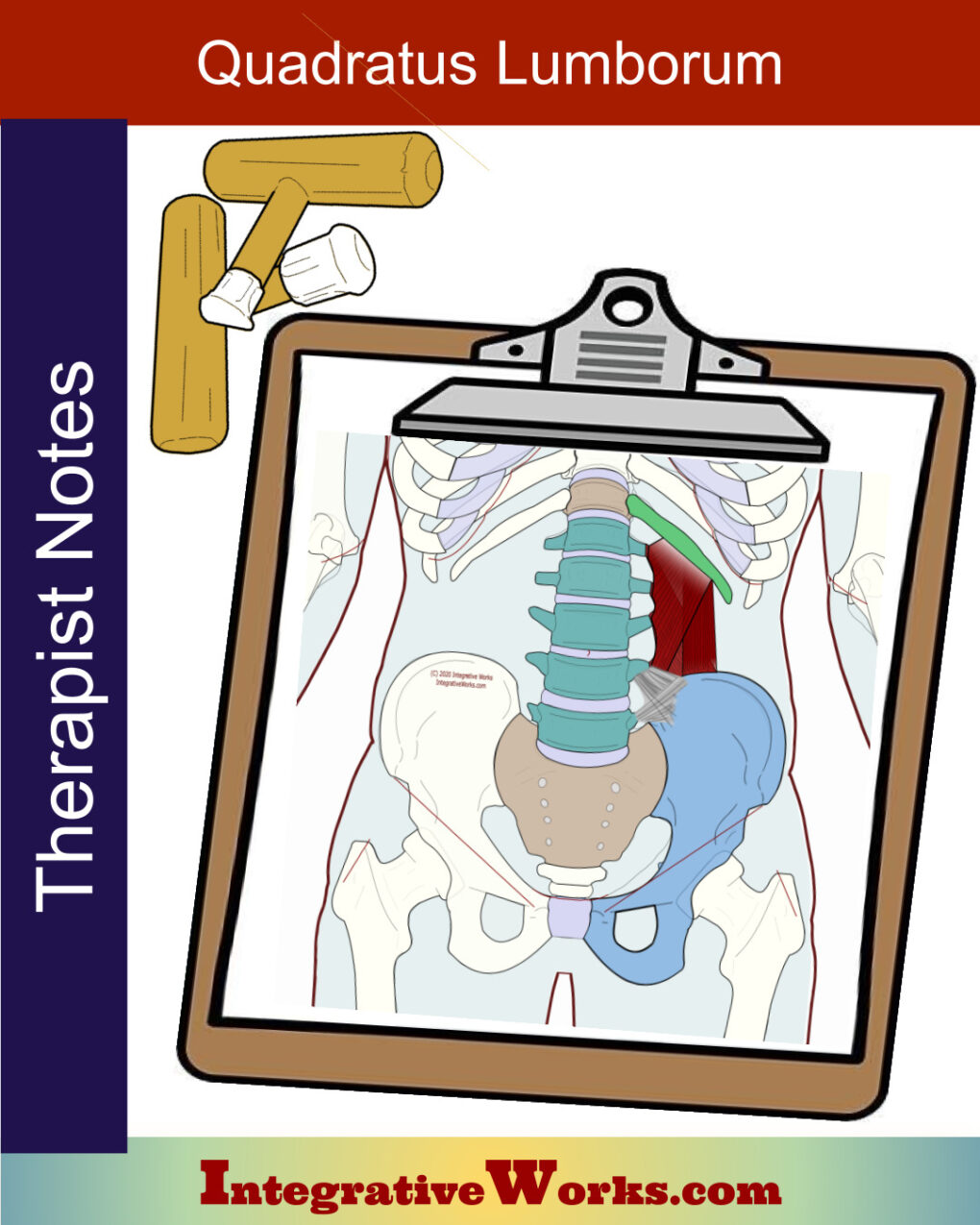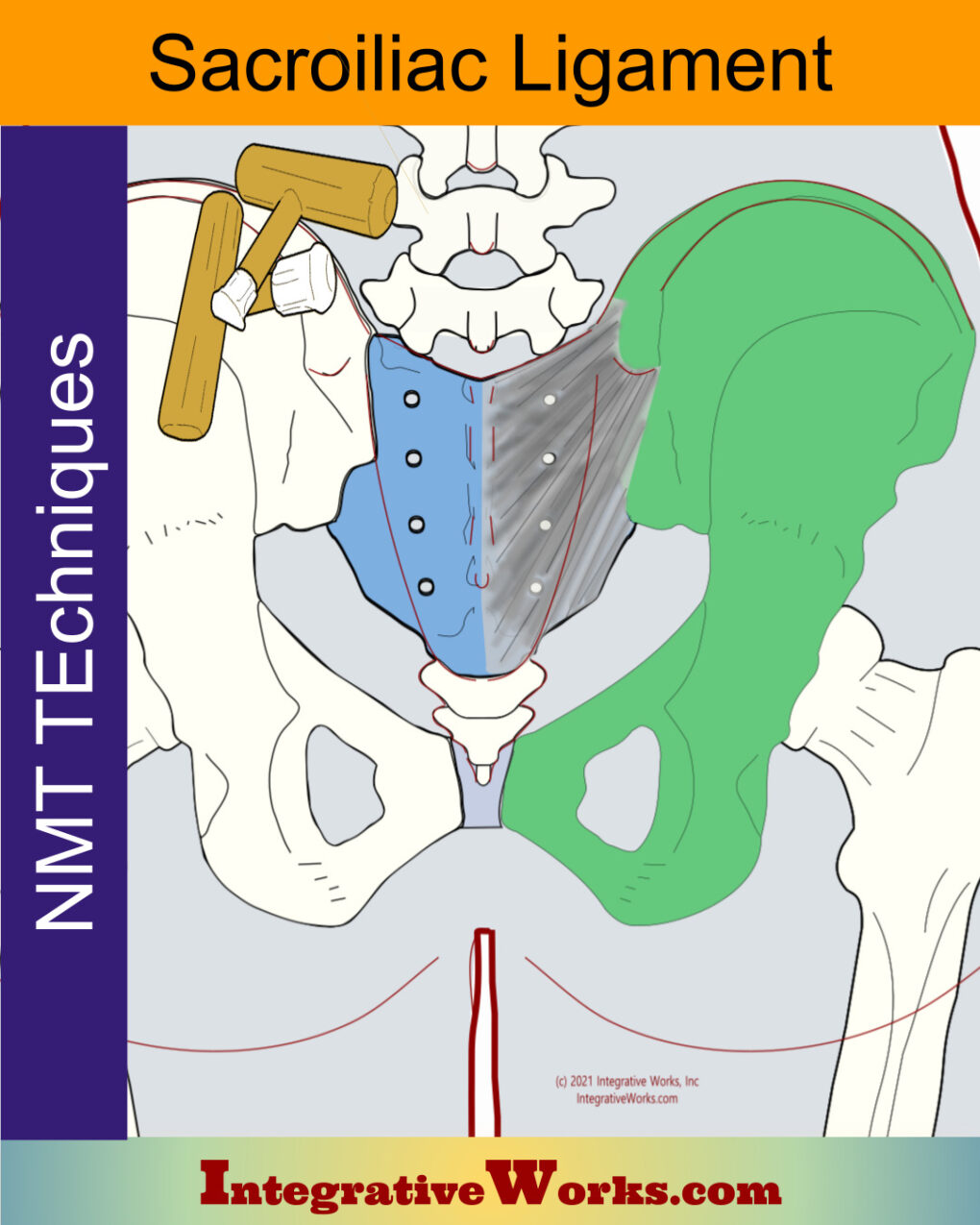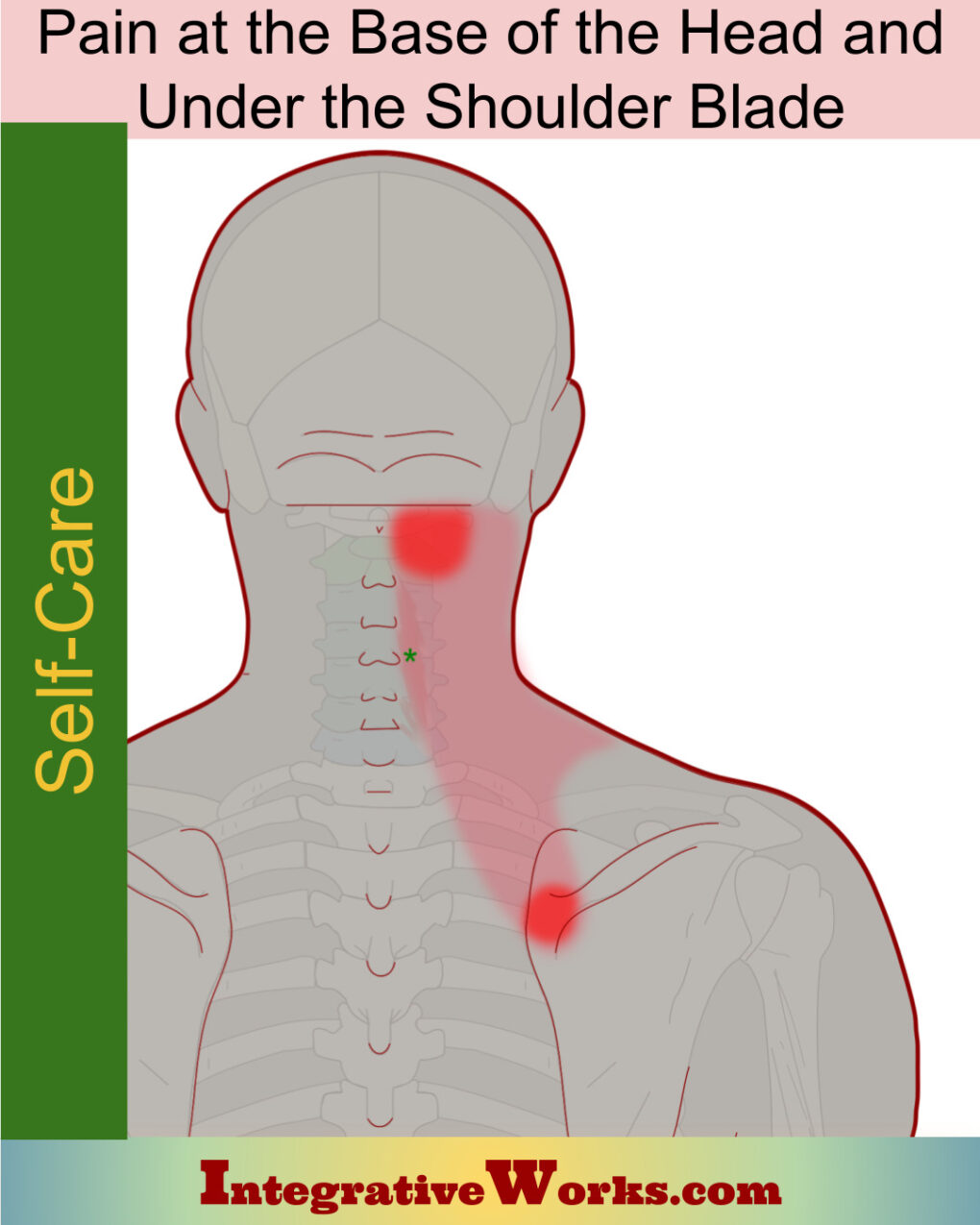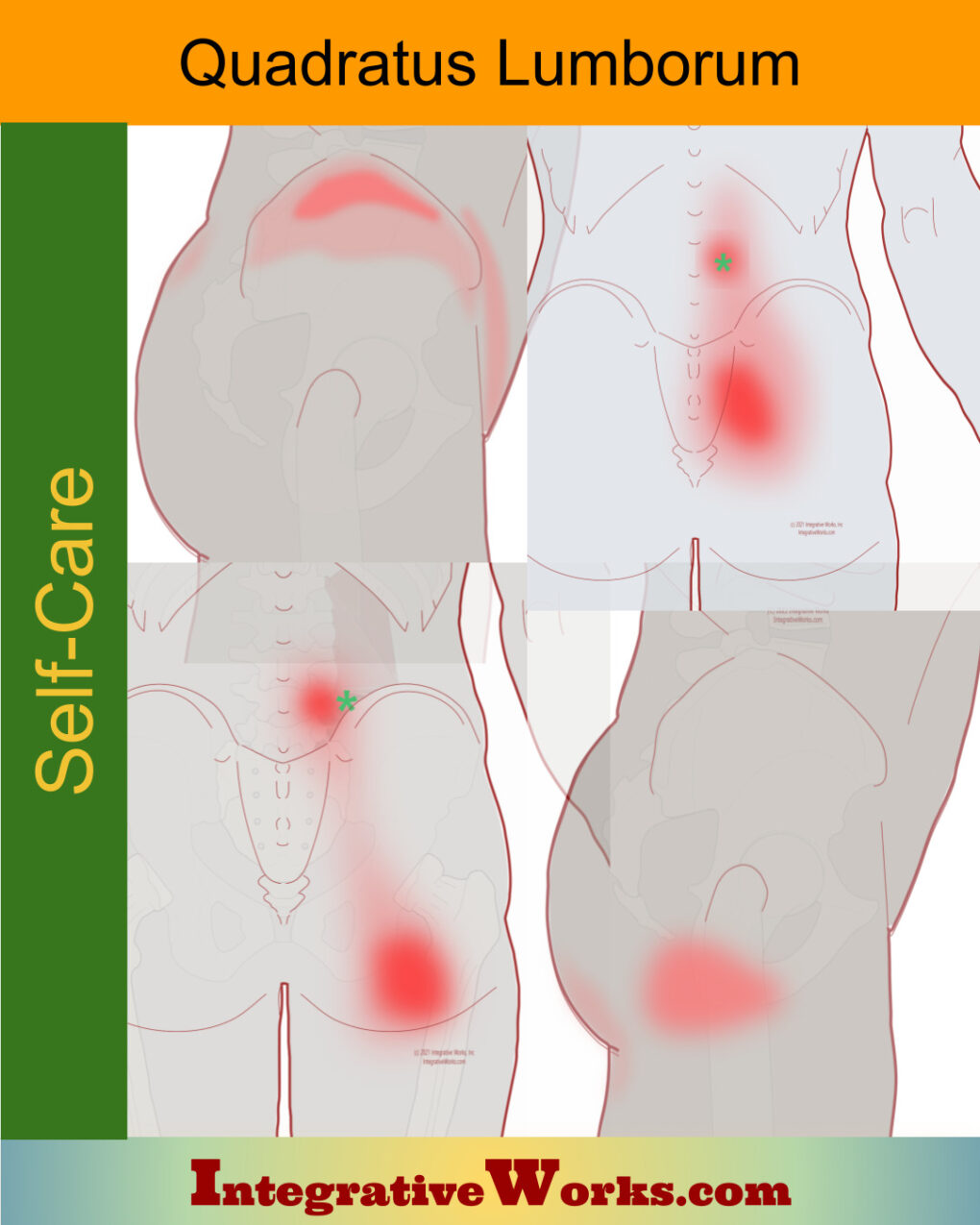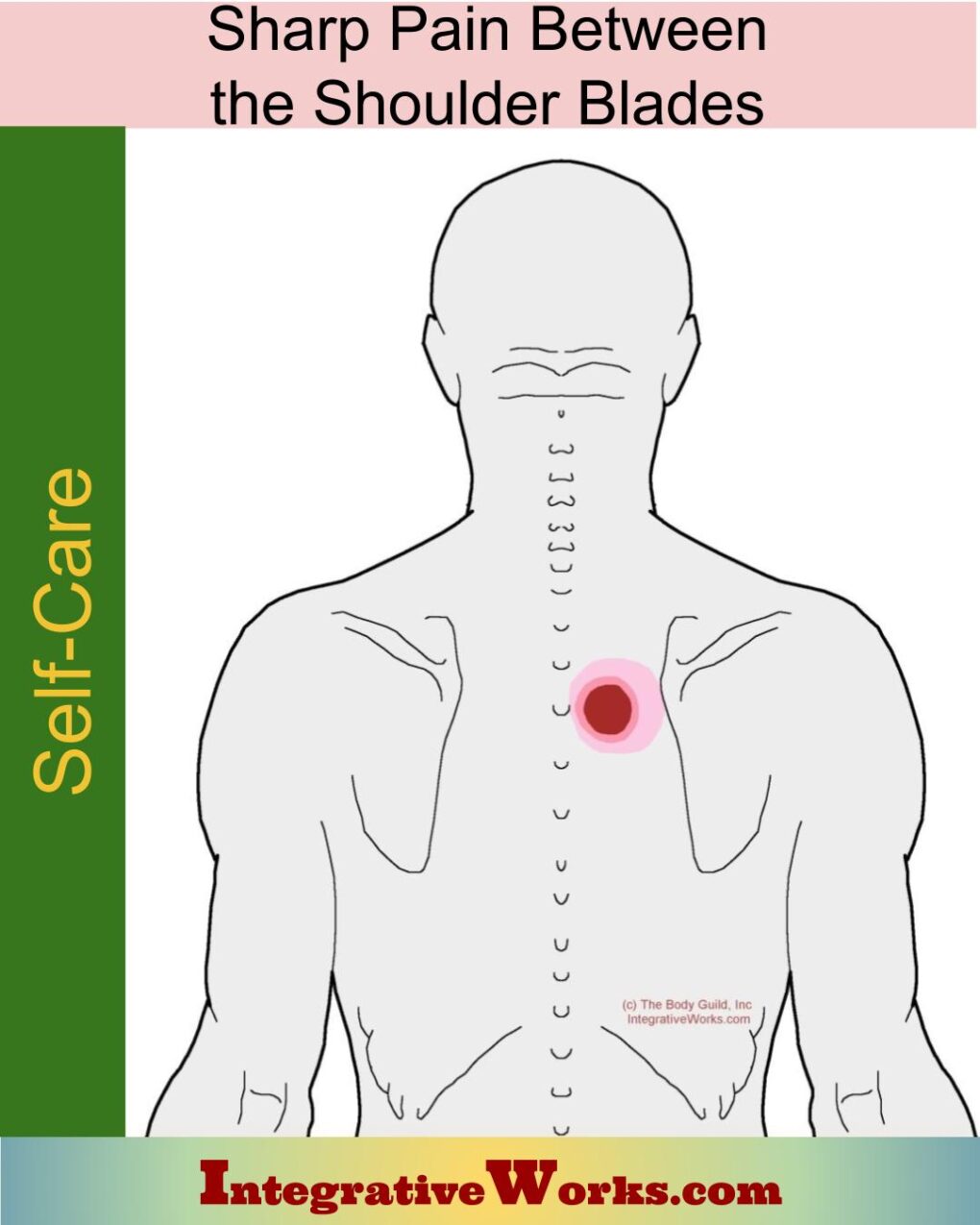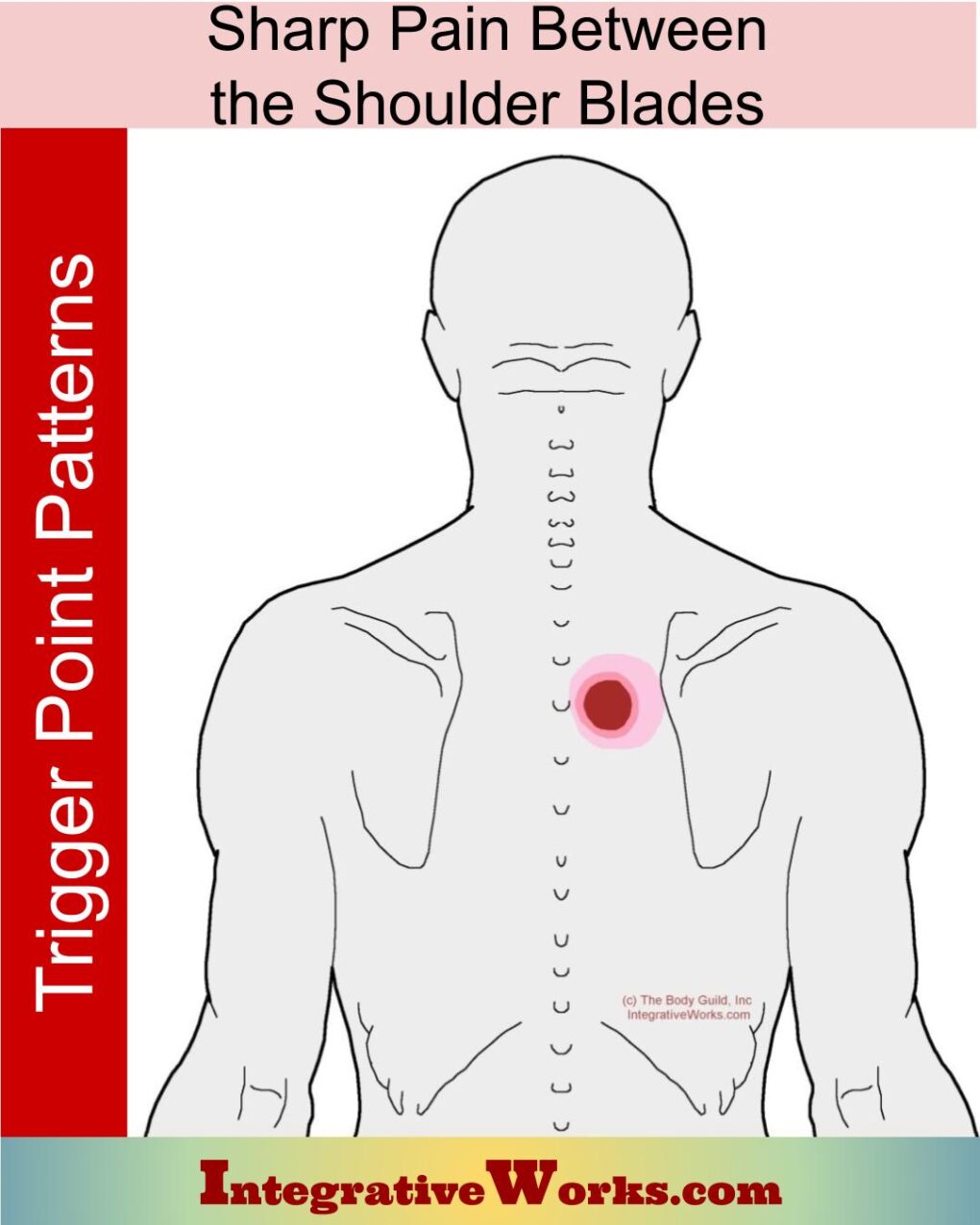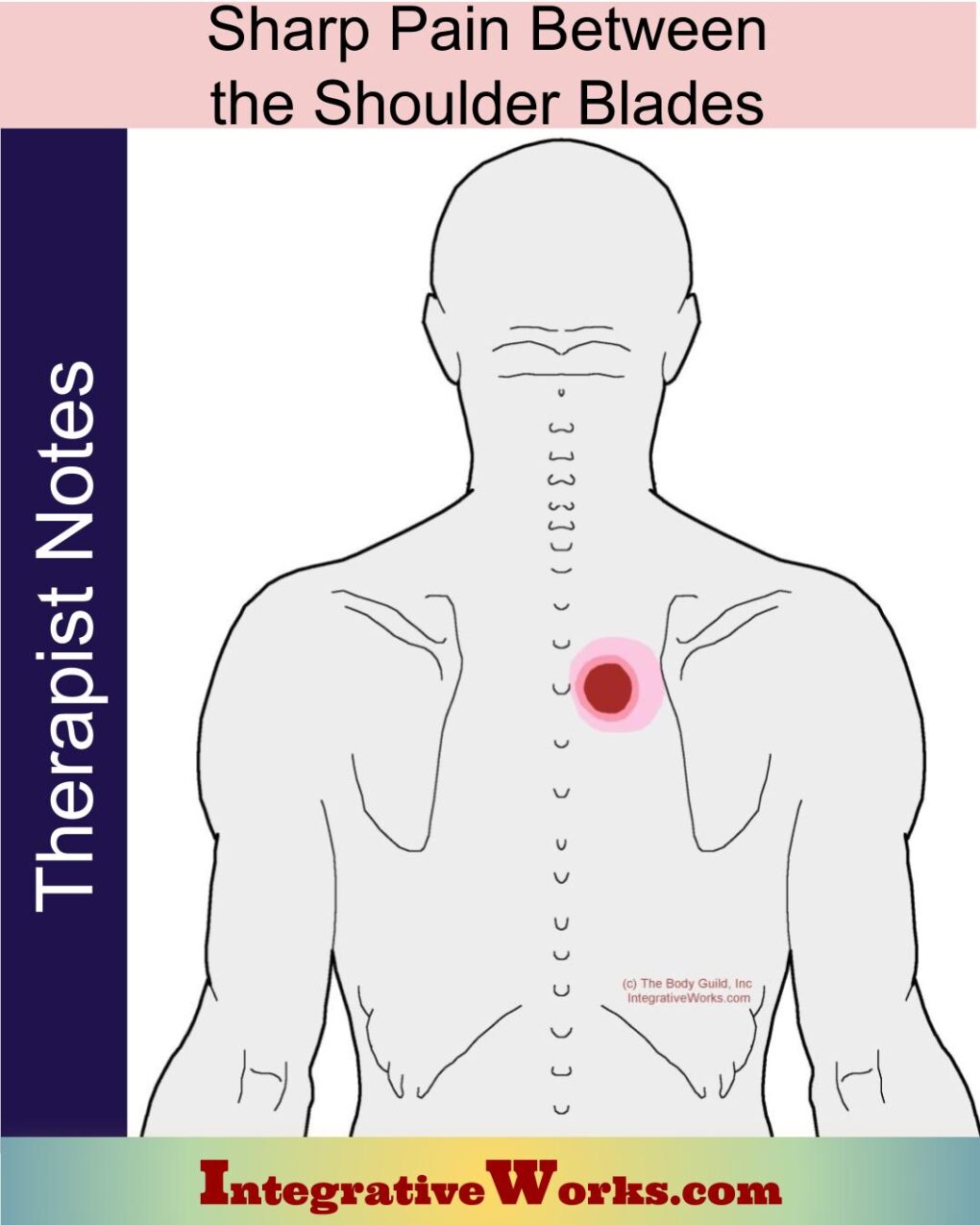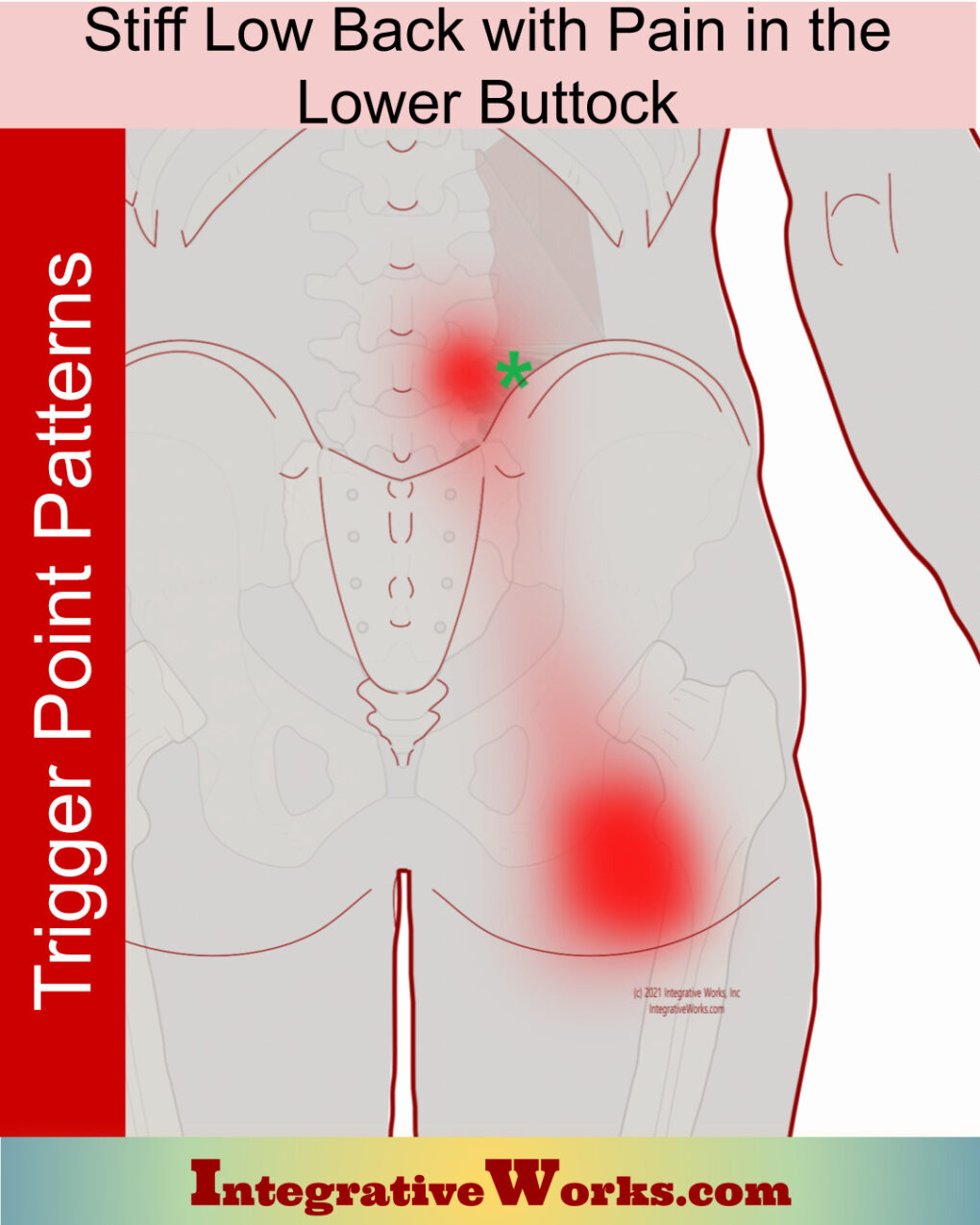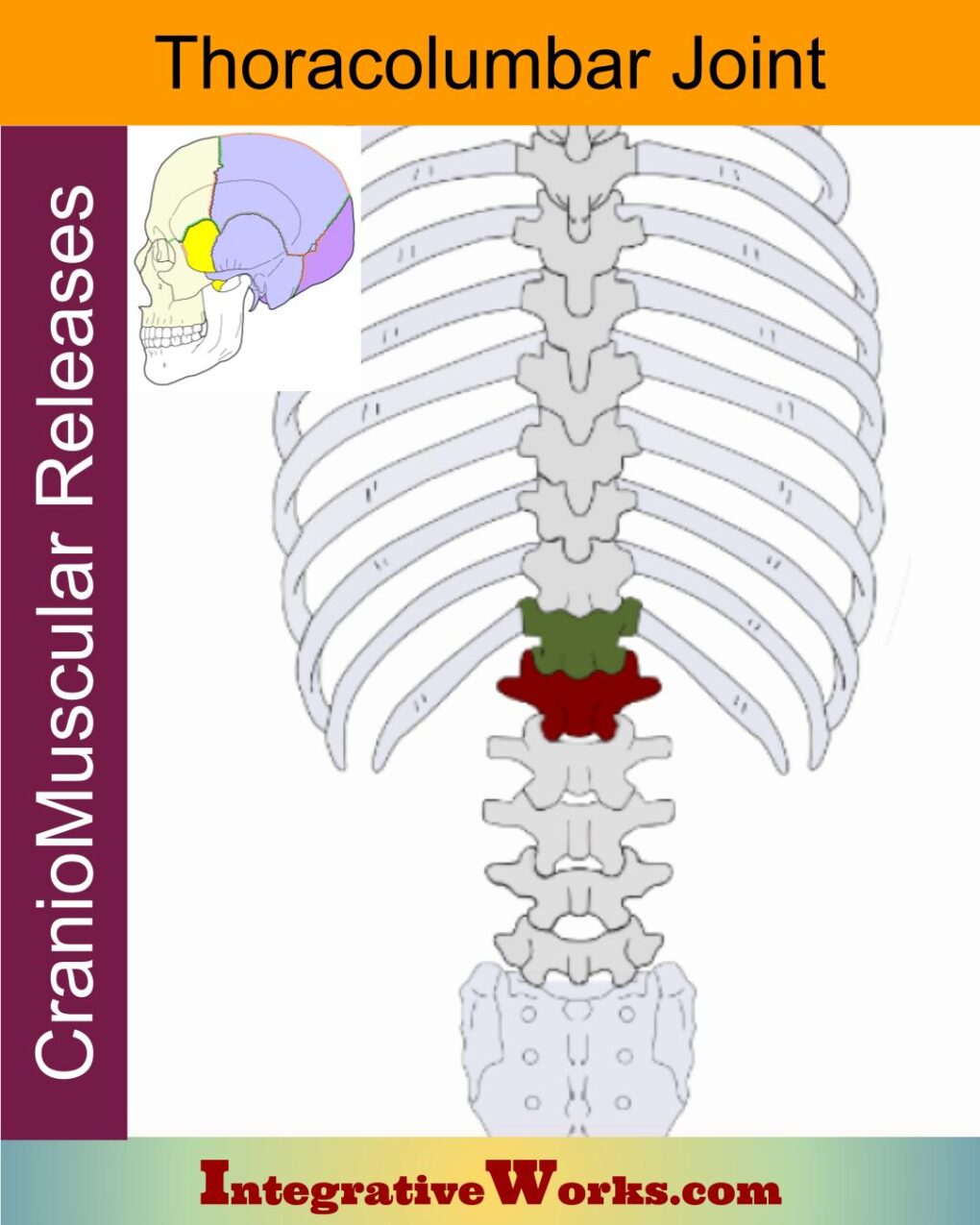Multifidi and Rotatores
The anatomy studies and illustrations of the multifidus and rotatores vary a great deal. In general, They anchor near the base of the transverse process of a vertebra. Then, strands of muscle extend to spinous processes of the five vertebrae above them. There are exceptions to that generalization.
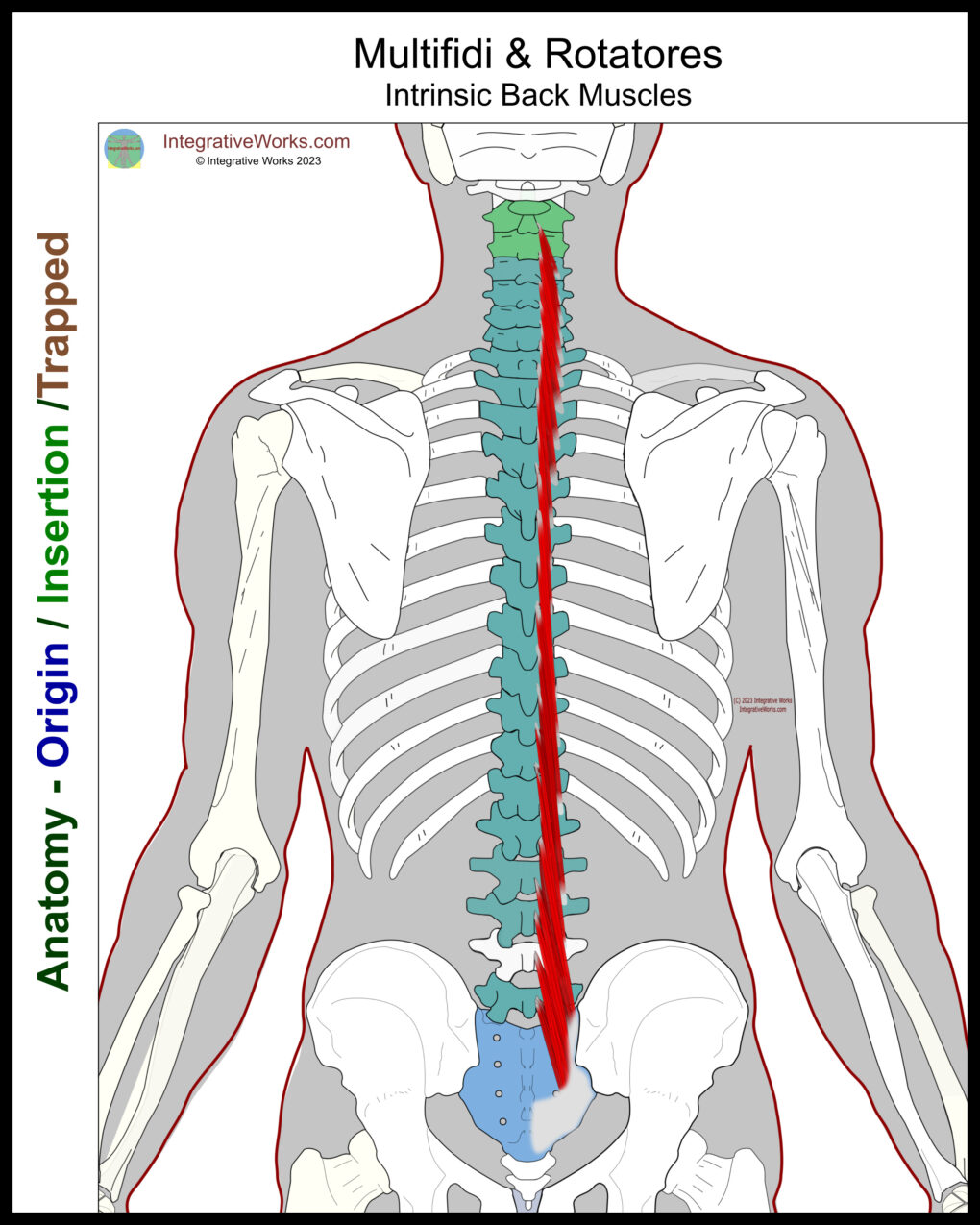
Overall Structure
Multifidi and rotatores form a thick muscle band that fills the lamina groove.
The shortest strand is the deepest. As the strands lengthen to span more vertebrae, they become more superficial.
This forms a thick web of guy wires that allow vertebrae to move in relationship to each other. They are reported to extend, laterally flex, and rotate vertebrae in relationship to each other.
Innervation
The posterior rami innervate these muscles.
Rotatores

Rotatores are the deepest muscles in the lamina groove. Rotatores connect the transverse process of a vertebra to the spinous processes of the spinous process of two vertebrae just above it.
Notably, most studies focus on the thoracic rotatores. Largely, they report that the rotatores are inconsistent and often non-existent in the lumbar and cervical regions.
Multifidi
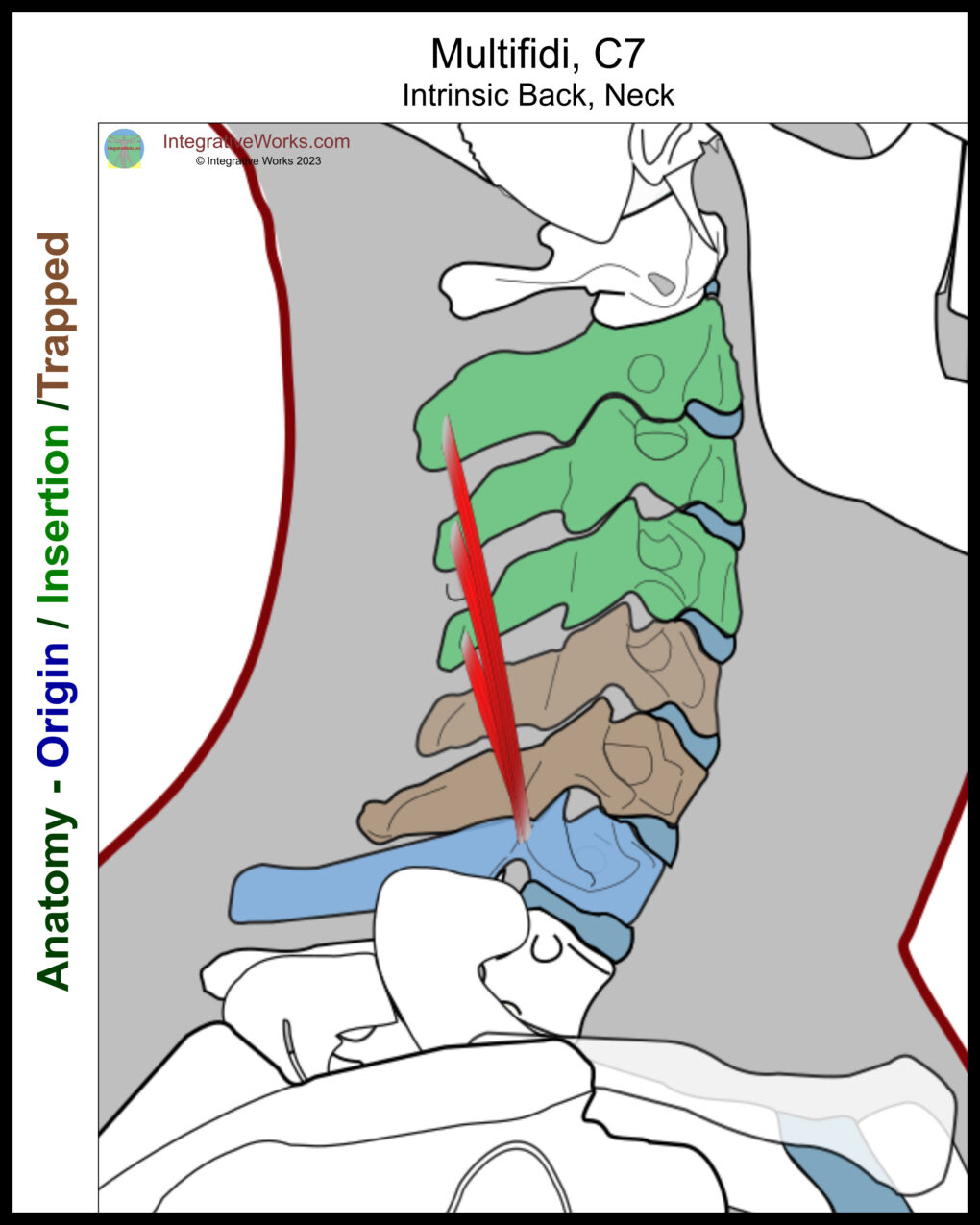
The multifidi originate on or near the transverse process of the inferior vertebra. Then, they skip the two vertebrae just superior to that vertebra and where the rotatores attach. Instead, they insert on the 3rd to 5th vertebrae above the origin.
Combined Structure

Multifidi lay superficial to the rotatores. Multifidi also originate on or near the transverse process of a vertebra. Together, they extend to the spinous processes of the five vertebrae superior to the origin. This configuration traps vertebrae between the attachments.
The posterior rami of spinal nerves innervate these small muscles.
A Note About Anatomy Studies of Lumbosacral Multifidi

This meta-study sheds light on the problems of defining this anatomy and anatomy in general. Notably, it finds that there are large inconsistencies in the descriptions of lumbosacral multifidi.
Impressively, the meta-study reviews 303 studies and 19 anatomy atlases.
These variances include descriptions of size, attachments, depth, and more. It is both maddening and enlightening to read. The studies are diverse in population and approach. There is a discussion about how and why studies vary.
Multifidi Attachments by Spinal Section
Multifidi attachments vary slightly in different sections of the spine.

Cervical
Cervical multifidi are much smaller than the lumbar multifidi. Rotatores tend to be less consistent in the cervical spine. Also, many texts seem to refer to the muscles that only span one or two vertebrae in the cervical spine as multifidi.
Origin
- articular process (of the lower four vertebrae)
Insertion
- spinous processes of the vertebrae 2-4 segments above, up to the axis
There are cervical region has exceptions to the typical multifidi structure. The sections originate on C4-C7 and insert on C2-C5, leaving some single strands that only skip over one vertebra.
Thoracic Multifidi
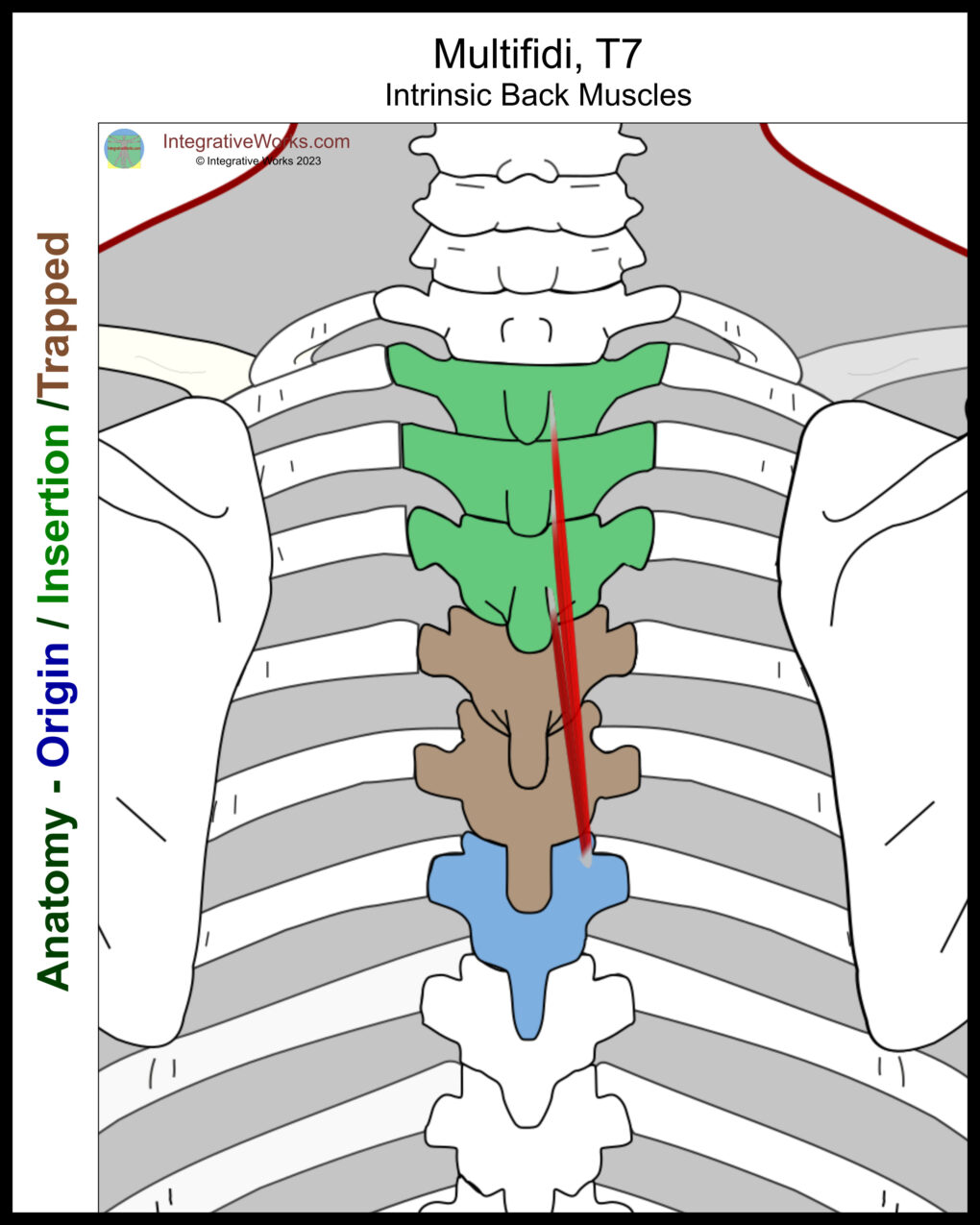
Studies vary, but the thoracic spine consistently has rotatores. However, The multifidi are reported as inconsistent through this section.
Origin
- transverse process
Insertion
- the spinous process of the vertebrae 3-5 vertebrae above the origin
Lumbar Multifidi
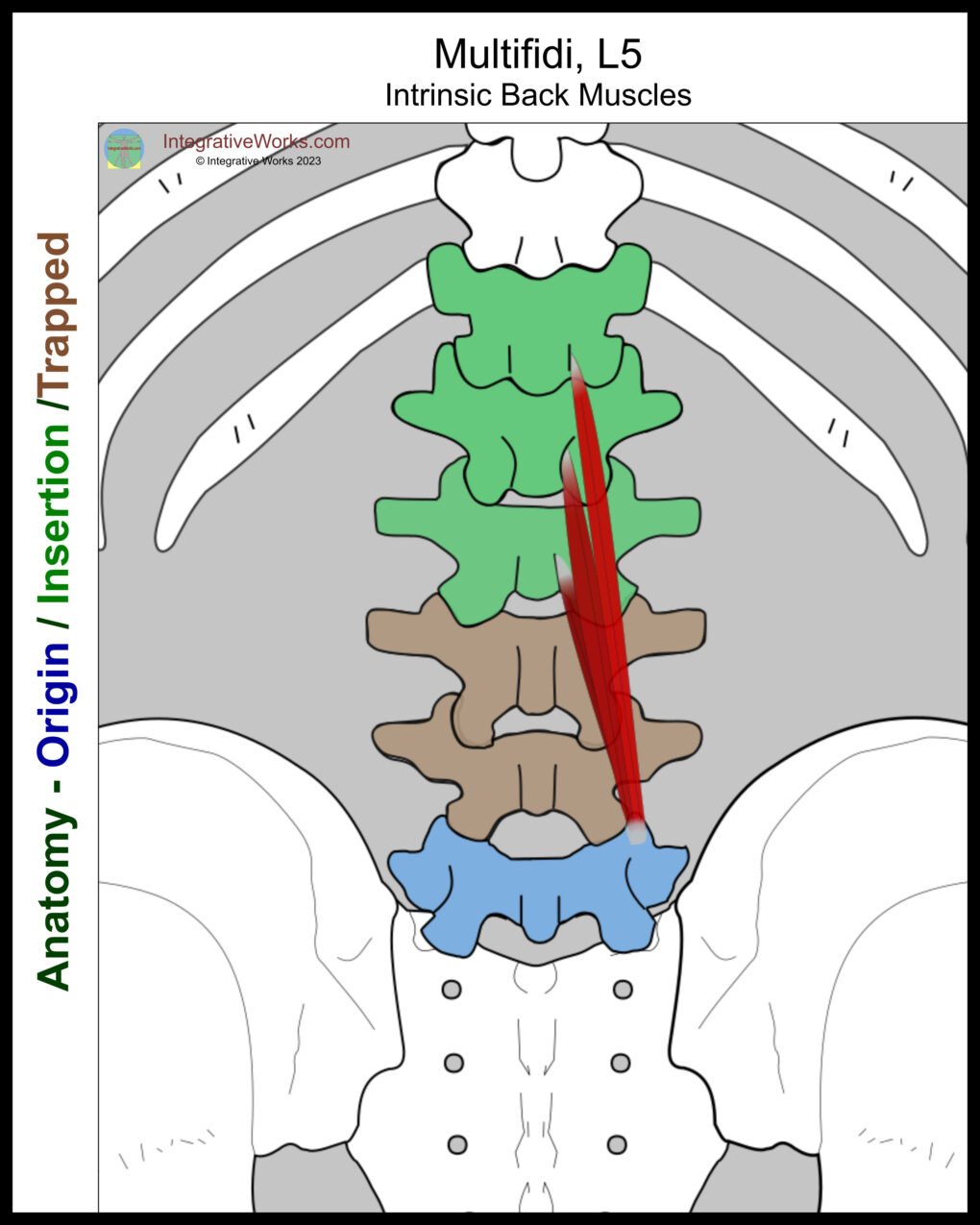
Lumbar vertebrae tend to have thick multifidi. However, the rotatores are inconsistent. Additionally, the lumbosacral multifidi tend to get fatty, weak, and slow to recover in people over 40.
Origin
- mamillary process
Insertion
- the spinous process of the vertebrae 3-5 segments above the origin
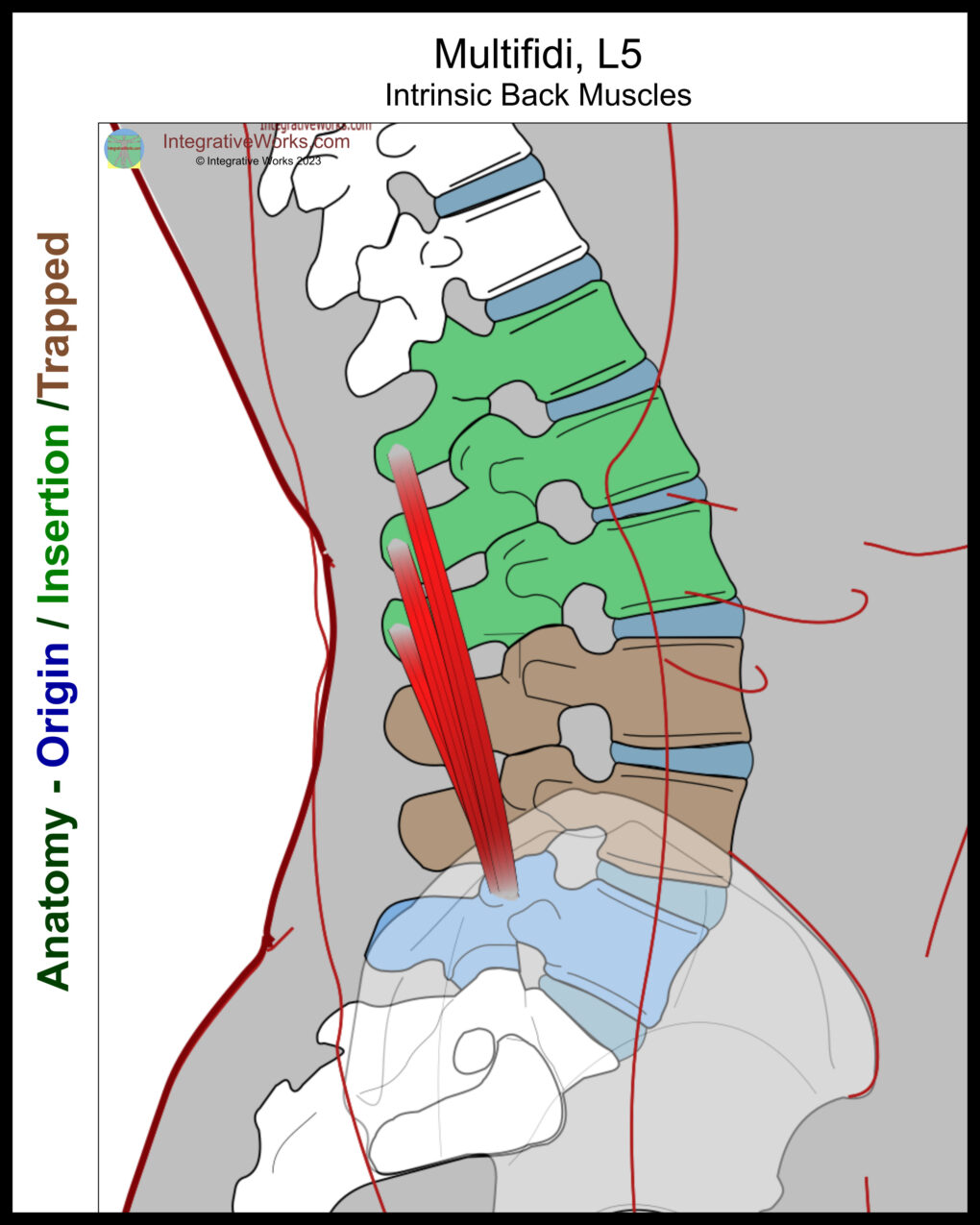
Lateral View
The lumbar multifidi form a thick pillar of overlapping muscle in the low back. That complex structure continues onto the sacrum.
Sacral Multifidi
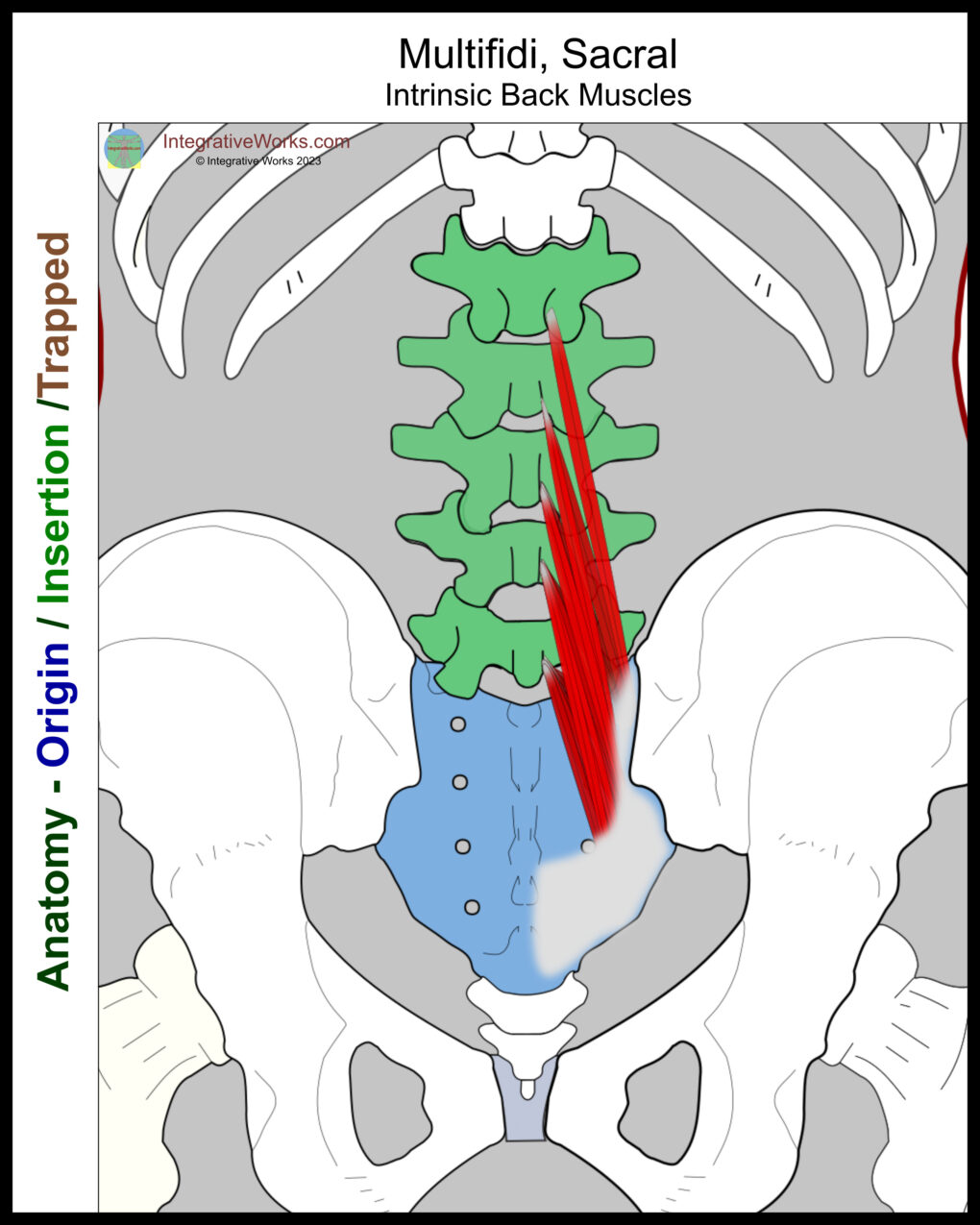
These muscular sections tend to vary a great deal in thickness. Additionally, they get fattier and more easily inflamed as one ages.
Origin
- lateral border of the sacrum via an aponeurosis
Insertion
- spinous processes of the lumbar vertebrae
Related Posts
Cervical Lamina Supine – Neuromuscular Massage Protocol
Cervical Multifidi – Massage Therapy Notes
Do You Find Trigger Point Illustrations Confusing?
Ethmoid / Vomer Distraction
Fragile Low Back with SI Joint Pain
Lamina Groove – Neuromuscular Massage Protocol
Pain Along One Side of the Sacrum
Pain Along One Side of the Sacrum – Massage Therapy Notes
Pain at the Base of the Head and Under Shoulder Blade
Quadratus Lumborum – Massage Therapy Notes
Sacroiliac ligament – Neuromuscular Massage Protocol
Self Care – Pain Along One Side of the Sacrum
Self Care – Pain at the Base of the Head and Under Shoulder Blade
Self Care – Quadratus Lumborum
Self Care – Relief from Coughing
Self Care – Sharp Upper Back Pain Between the Shoulder Blades
Sharp Pain Between the Shoulder Blades
Sharp Pain Between the Shoulder Blades – Massage Therapy Notes
Stiff Low Back with Pain in the Lower Buttock
Thoracolumbar Release with AO-45
Support Integrative Works to
stay independent
and produce great content.
You can subscribe to our community on Patreon. You will get links to free content and access to exclusive content not seen on this site. In addition, we will be posting anatomy illustrations, treatment notes, and sections from our manuals not found on this site. Thank you so much for being so supportive.
Cranio Cradle Cup
This mug has classic, colorful illustrations of the craniosacral system and vault hold #3. It makes a great gift and conversation piece.
Tony Preston has a practice in Atlanta, Georgia, where he sees clients. He has written materials and instructed classes since the mid-90s. This includes anatomy, trigger points, cranial, and neuromuscular.
Question? Comment? Typo?
integrativeworks@gmail.com
Follow us on Instagram

*This site is undergoing significant changes. We are reformatting and expanding the posts to make them easier to read. The result will also be more accessible and include more patterns with better self-care. Meanwhile, there may be formatting, content presentation, and readability inconsistencies. Until we get older posts updated, please excuse our mess.
